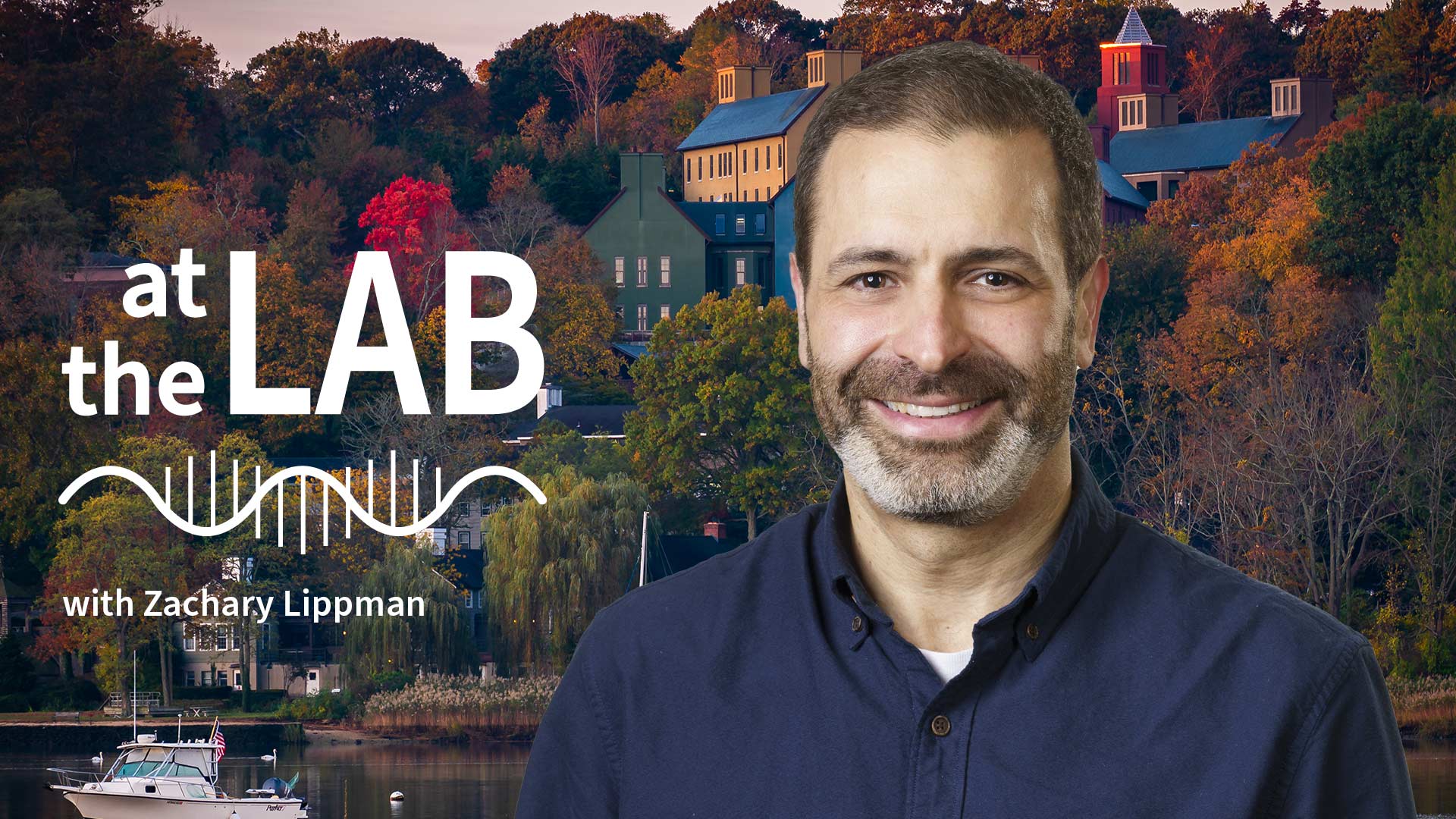Picture a tiny silo of tasty tomatoes growing in a dense urban environment. Now imagine that same setup … in outer space! It all starts At the Lab. For our premiere episode, we visit the lab of Cold Spring Harbor Laboratory Professor & HHMI Investigator Zachary Lippman to catch a glimpse at the future of food and farming.
Read the related story: A new tomato ideal for urban gardens and even outer space
Transcript
Sam Diamond: You’re now At the Lab with Cold Spring Harbor Laboratory. My name is Sam Diamond, and this week At the Lab: “The tomato of tomorrow.”
SD: We’ll hear from MacArthur Award-winning plant biologist Zach Lippman. He’s designed a new tomato to grow indoors, in a city, with artificial light, no pesticides, and minimal water.
SD: To find out more, we popped into his office at Cold Spring Harbor. We found it filled with plant seeds, farm tools, and . . . a large dog.
Zach Lippman: This is Charlie, Charlie Lippman. Most of the day he spends here sleeping until people come in that smell good and he wants to lick them.
SD: Lippman can’t keep his dog from licking people. But he did manage to trick tomato plants into flowering faster. His lab changed a gene in tomatoes so that they’d fruit as quickly as possible. What does that mean for tomato growers?
ZL: You can get your yield really fast, and then you immediately turn around and you go in again. Right? So you’re basically getting multiple seasons of growth.
SD: Altering two more genes converted the tomato vines into bushes. This way, Lippman’s plants can stack in vertical hydroponic systems. As climate change makes more land less usable, Lippman says indoor farms that can run 365 days a year should be set for big-time growth.
ZL: You just can imagine, maybe a little bit in the distant future, that you have all of these quote-unquote “farms” laid out in this area that are all under climate control, computer operated. And now you’re able to produce on that land, whereas the more traditional way of producing would no longer be possible.
SD: NASA is also interested in Lippman’s tomatoes for long-distance space travel.
ZL: You know what? We’re going to be eating our own space-grown lettuce and tomatoes for dinner tonight—right before our freeze-dried beef.
SD: Thanks for listening to At the Lab. Please tune in next week and be sure to subscribe to get another fascinating story like this delivered each week. You can also find us online at cshl.edu and on all social media platforms. For Cold Spring Harbor Laboratory, I’m Sam Diamond, and I’ll see you next time At the Lab.
